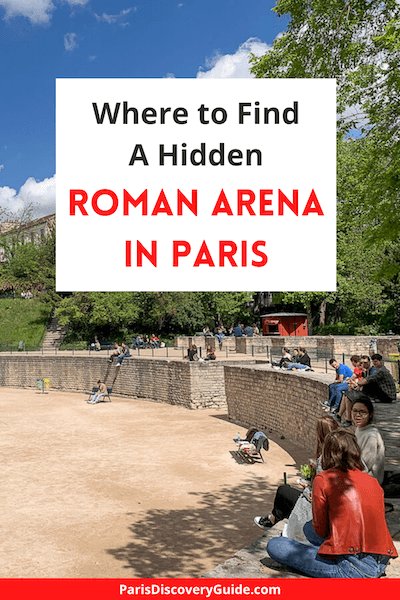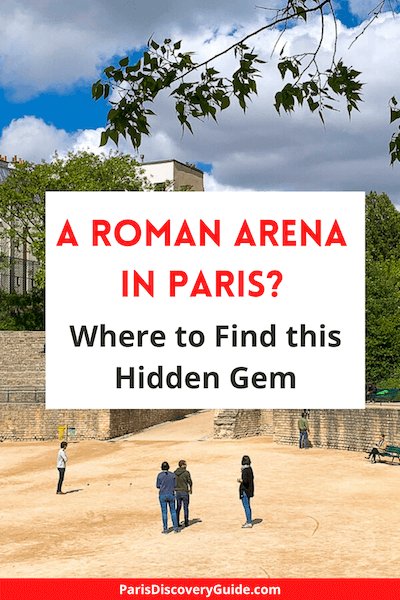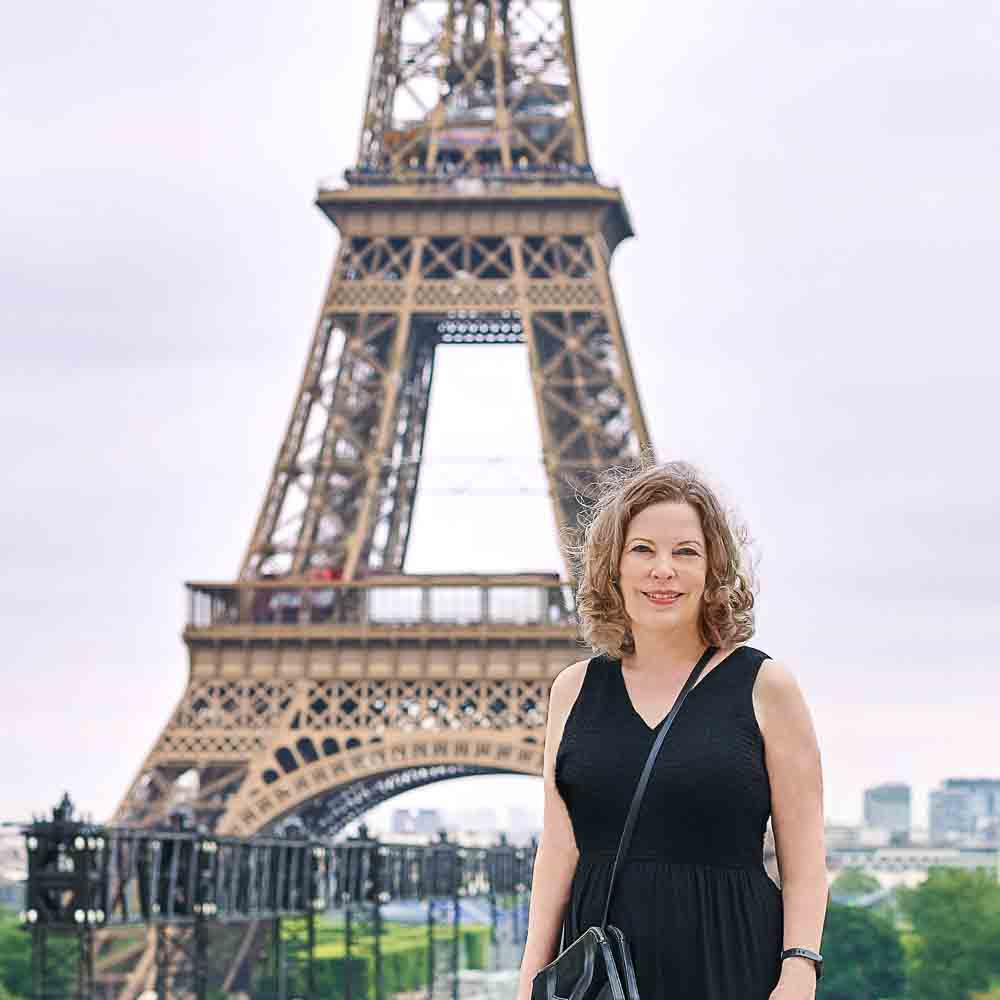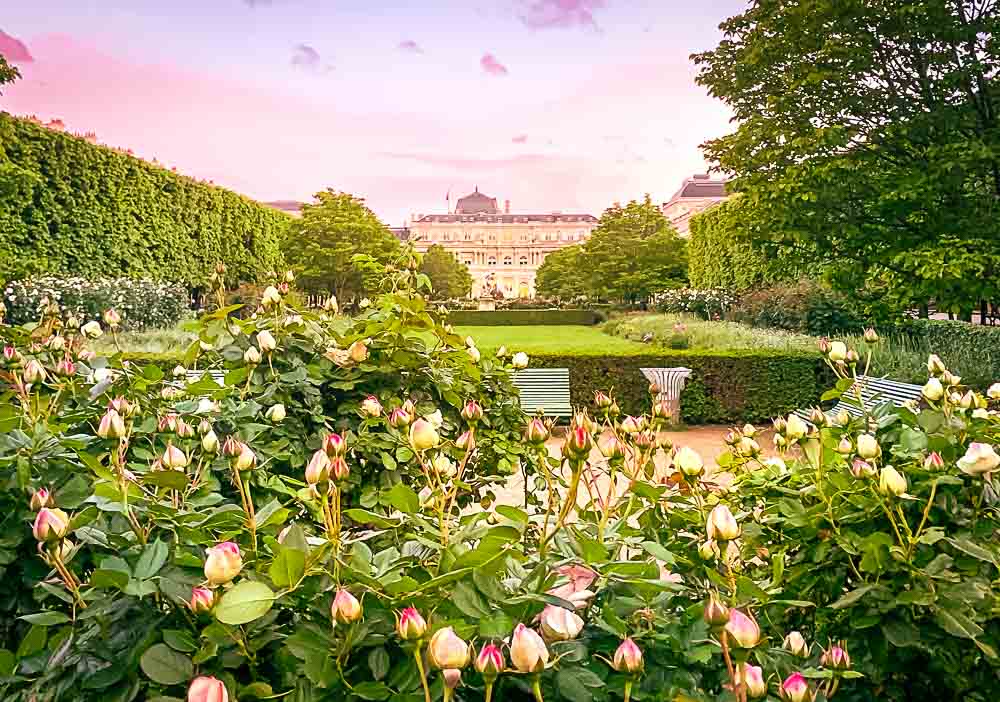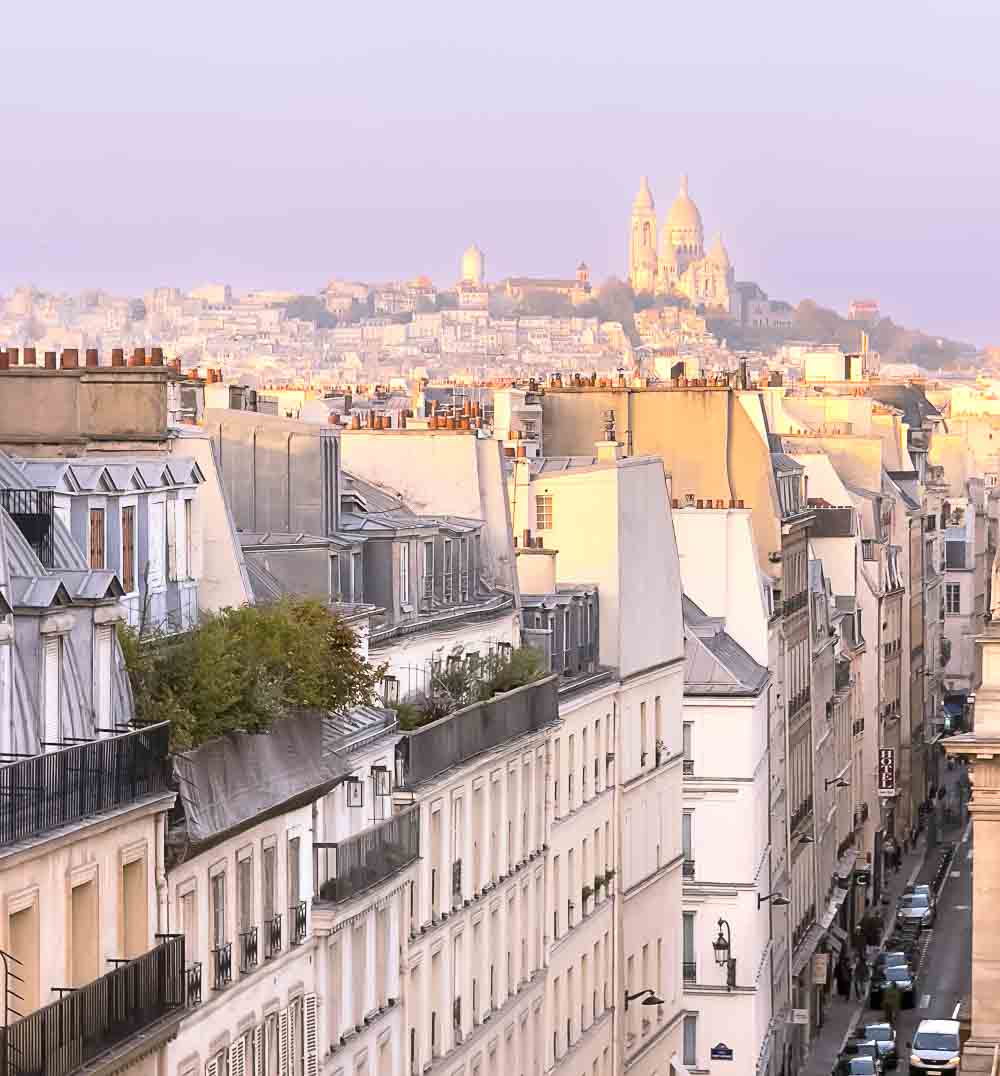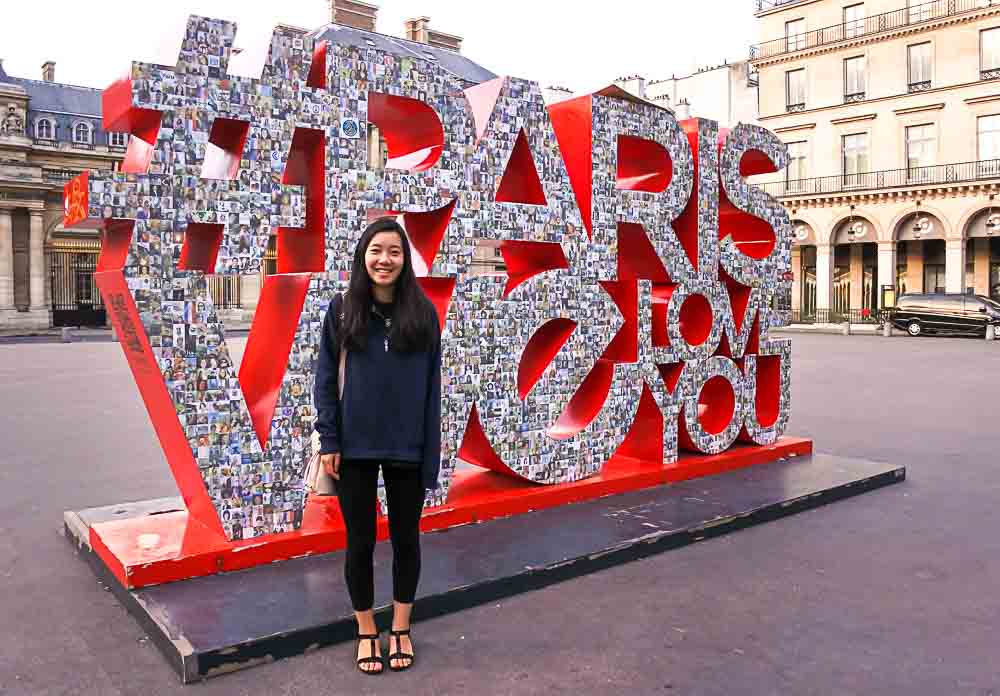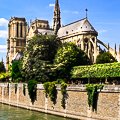Arènes de Lutèce, a 1st century AD Roman amphitheater hidden from street view in the Latin Quarter, is one of the city’s two most visible remaining structures from when Rome ruled this swath of Europe and Paris was just a small settlement called Lutetia, or Lutèce.
The Lutece Arena is the oldest historical monument built in Paris, and is the third largest Roman coliseum in France.
Top photo: Arènes de Lutèce in early April, (c) Paris Discovery Guide®
Paris Discovery Guide is a reader-supported publication. When you buy through my links, I may earn a small commission at no additional cost to you. Merci beaucoup for your support!
Arènes de Lutèce: Then & Now
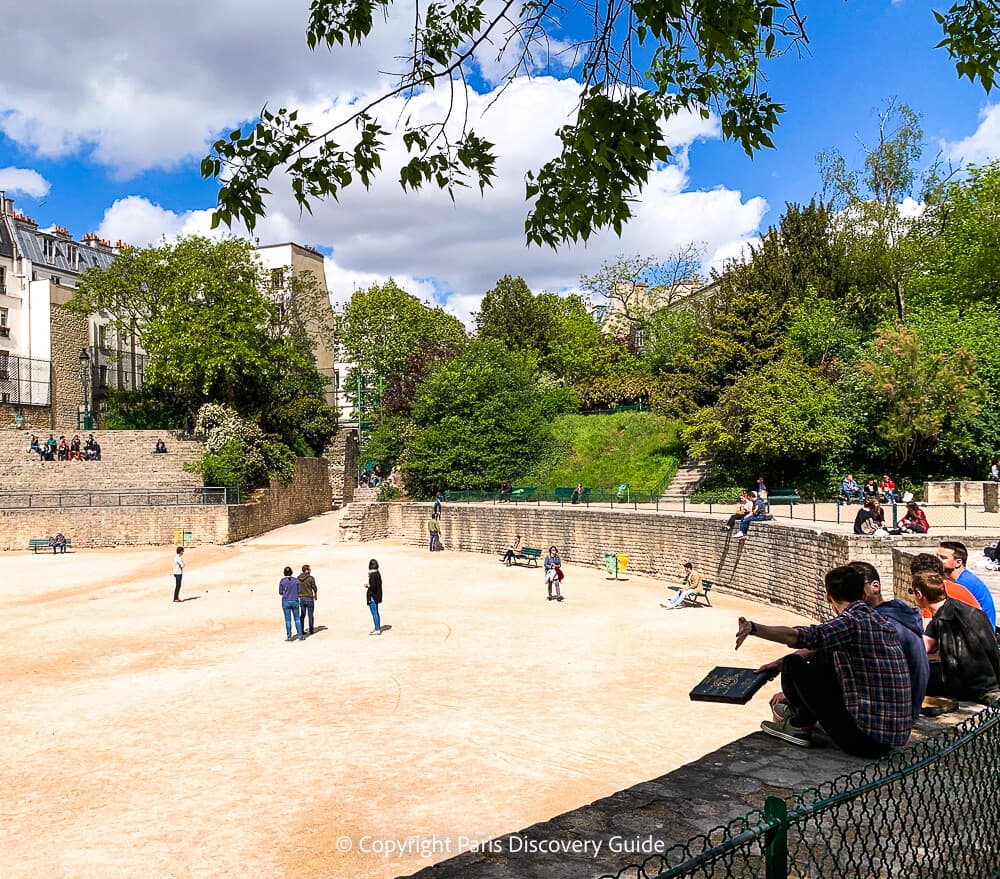
Once, Roman gladiators entertained crowds by fighting wild animals in the amphitheater's center, with as many as 17,000 spectators filling the tiered seating areas rising up along the sloped hillsides.
A 135-foot long stage across one end accommodated theatrical productions and orators.
A popular circus also took place here - look closely at the rooms at the base of the bleachers, and you’ll see several ground-level spaces where the Romans kept their caged animals.
Today, soccer rules.
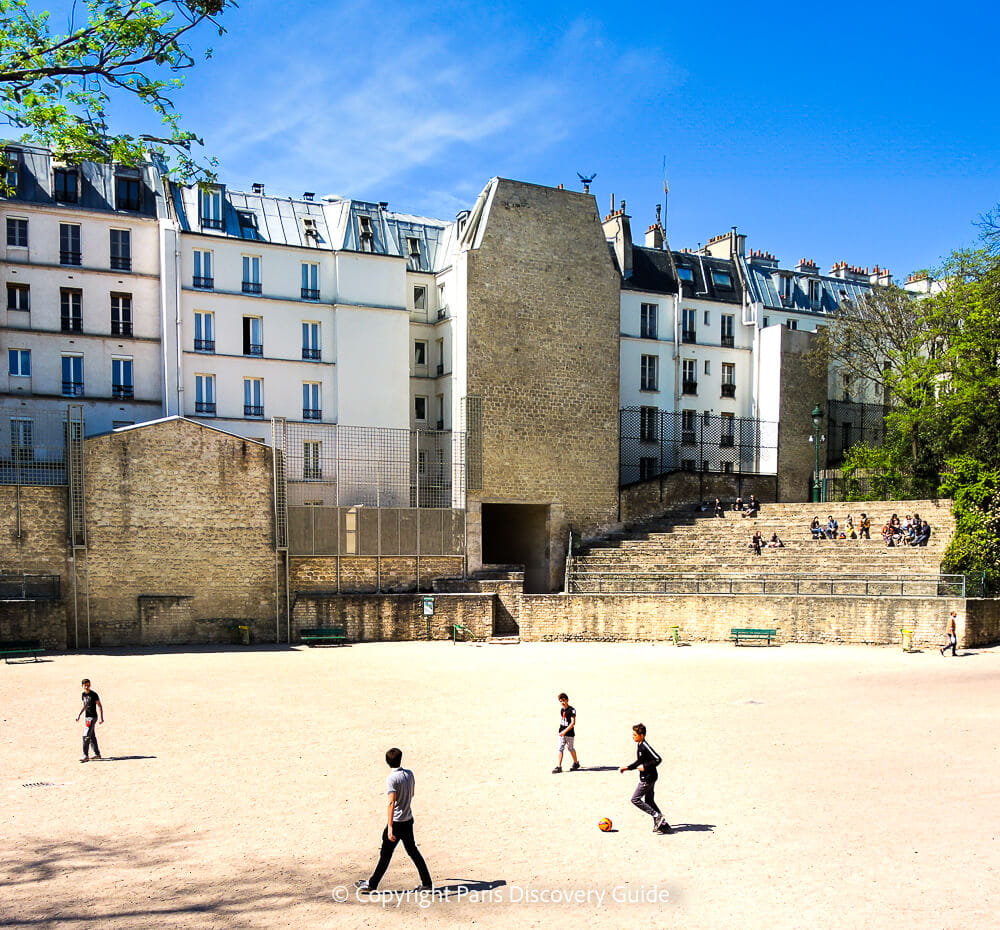
You’ll almost always see a dozen or so teens keeping a soccer ball in constant motion on the smooth white granite gravel surface.
They share the space with older men who gather to play boules (pétanque) over to the side.
The coliseum now lies at the center of a small public park featuring grassy slopes, flowering plants, and lots of specimen trees.
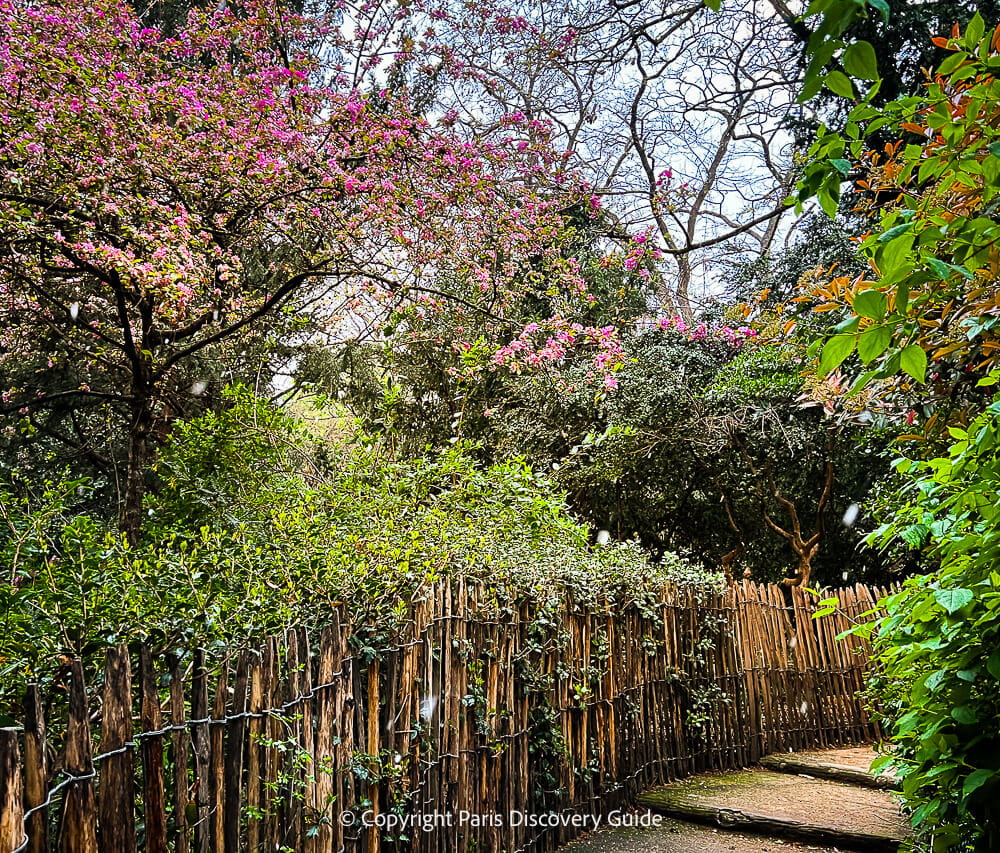
Look closely, and you'll find botanical labels on many of them.
There's even a small section of newly planted grapevines on one particularly steep slope.
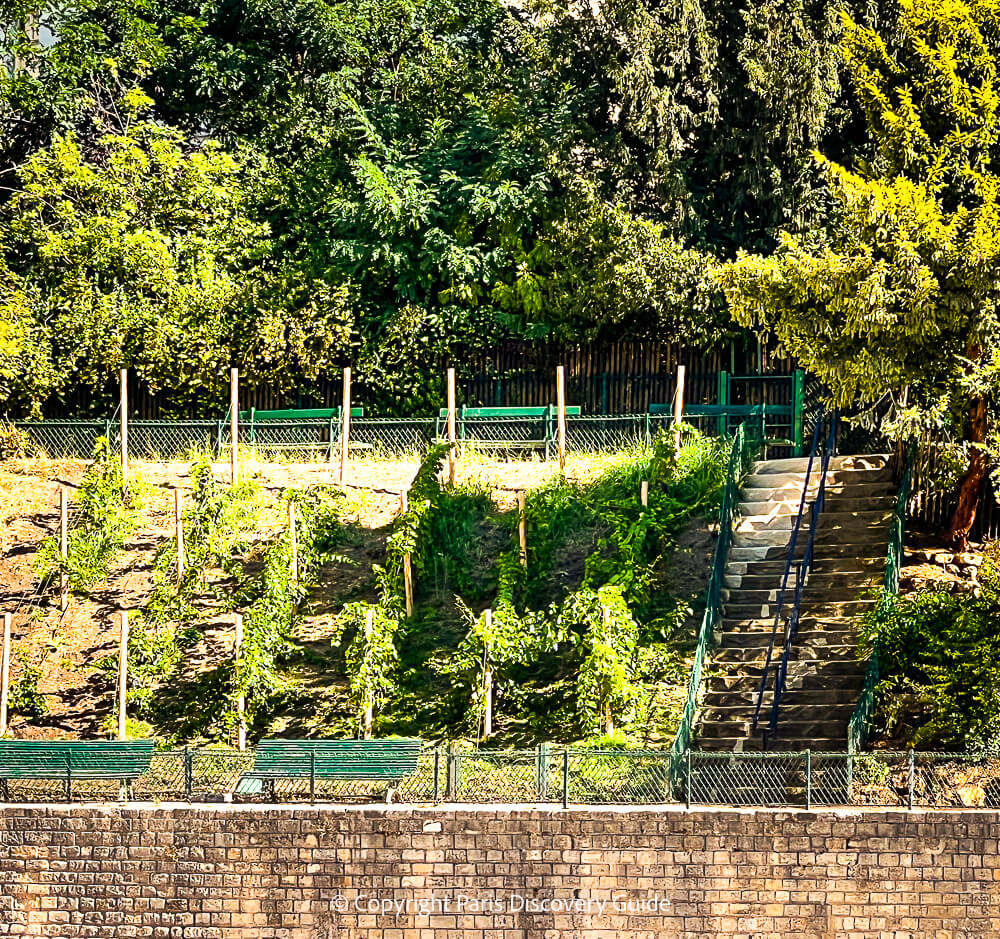
Parisians who live or work nearby gather at les Arènes de Lutèce for picnics, a stroll among the gardens, or just quiet conversation.
Although you'll probably enjoy the arena and its surrounding park the most in spring, summer, and fall, it's also a surprisingly pleasant location for a winter stroll, thanks to the park's talented horticulturalists who ensure that even on the coldest day, you'll spot a few flowering shrubs and vines in bloom.
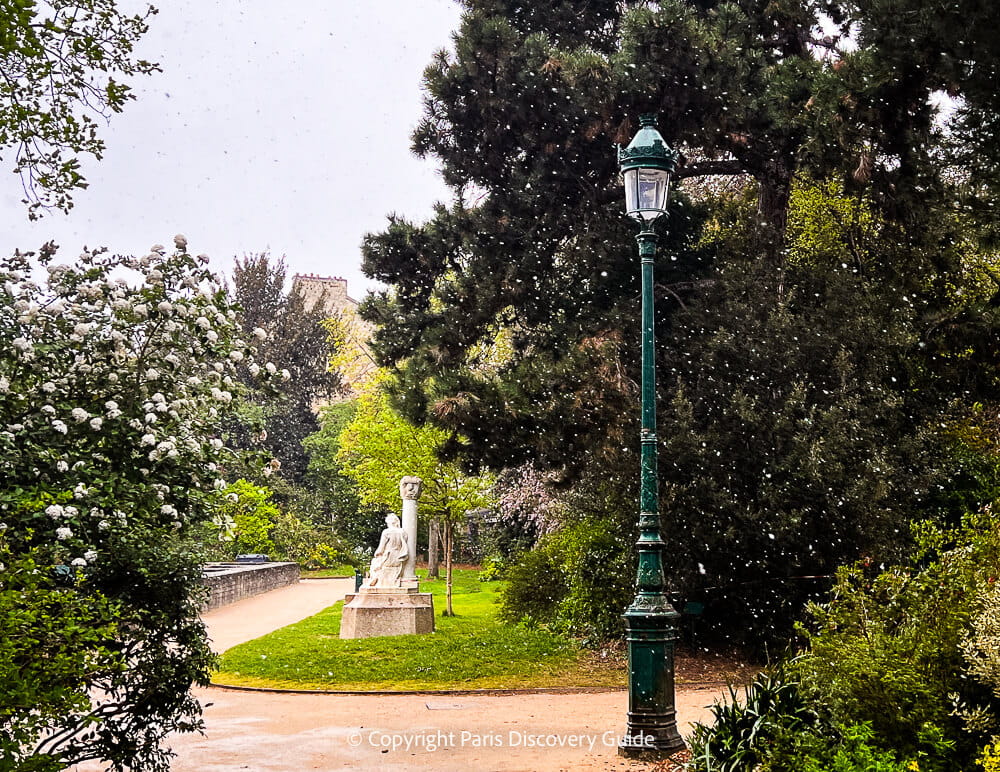
Few tourists find this hidden treasure, and most Parisians have never been here. You can't see the arena from nearby streets, and you're not likely to accidentally discover it.
But it's worth the search.
Aside from giving you an amazing glimpse of Roman life in Paris 2,000 years ago, the Arènes is one of the best places in the city to relax, soak up some sun, and experience modern-day life like a real Parisian.
Looking for a Guide Tour that Includes Arènes de Lutèce?
Here are our top Arènes de Lutèce tour recommendations:
- Latin Quarter Walking Tour: Uncover Ancient Secrets - Discover Arènes de Lutèce and other off-the-beaten path spots as well as modern faves such as Emily in Paris's favorite location on this small-group tour
- Off the Beaten Path Paris Bike Tour - In addition to visiting Arènes de Lutèce and other iconic Latin Quarter sites, you'll also visit the Marais and Saint-Germain-de-Pres neighborhoods
Location: How to Find Arènes de Lutèce
The Roman arena is tucked away in the Latin Quarter, behind the buildings along Rue Monge.
Because Arènes de Lutèce is hidden from view even if you walk right past it, you are unlikely to stumble upon it by accident. However, once you know where to spot the entrances, it is easy to access.
You can enter at three points:
1. 47 Rue Monge - Closest Métro: Cardinal Lemoine
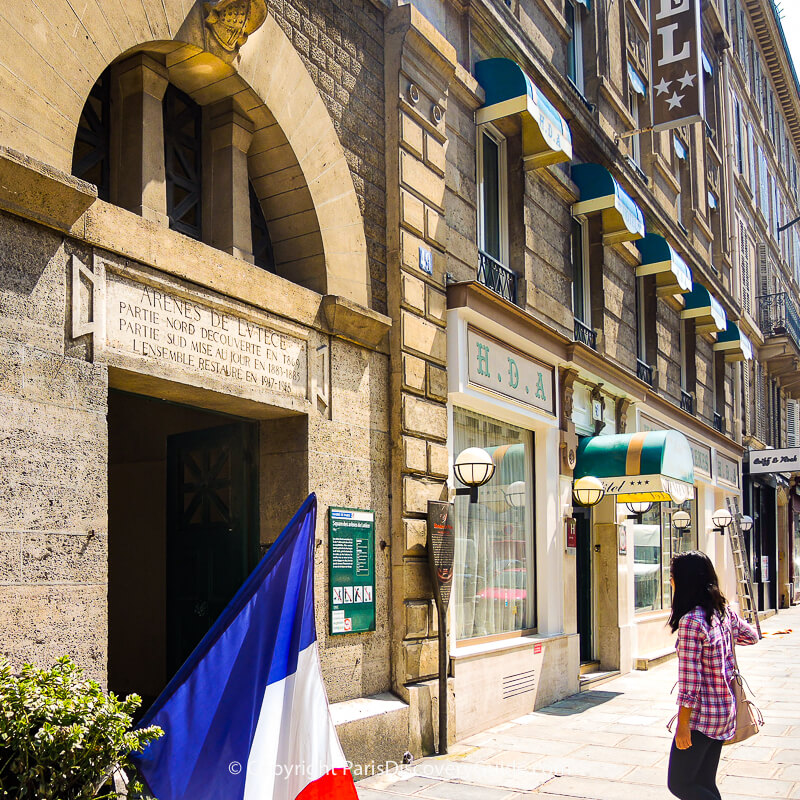
Street-side, look for an unobtrusive arched entrance with Arènes de Lutèce and a Roman helmet carved in the stone over the door. To spot it easily, look for the more visible Hôtel des Arènes sign next door.
You’ll pass through a short passageway between buildings, and then walk up a flight of fairly steep stairs while figuratively stepping back in time.
At the top, the Roman arena stretches out before you with the amphitheater rising around it.
2. Rue de Navarre - Closest Métro: Place Monge
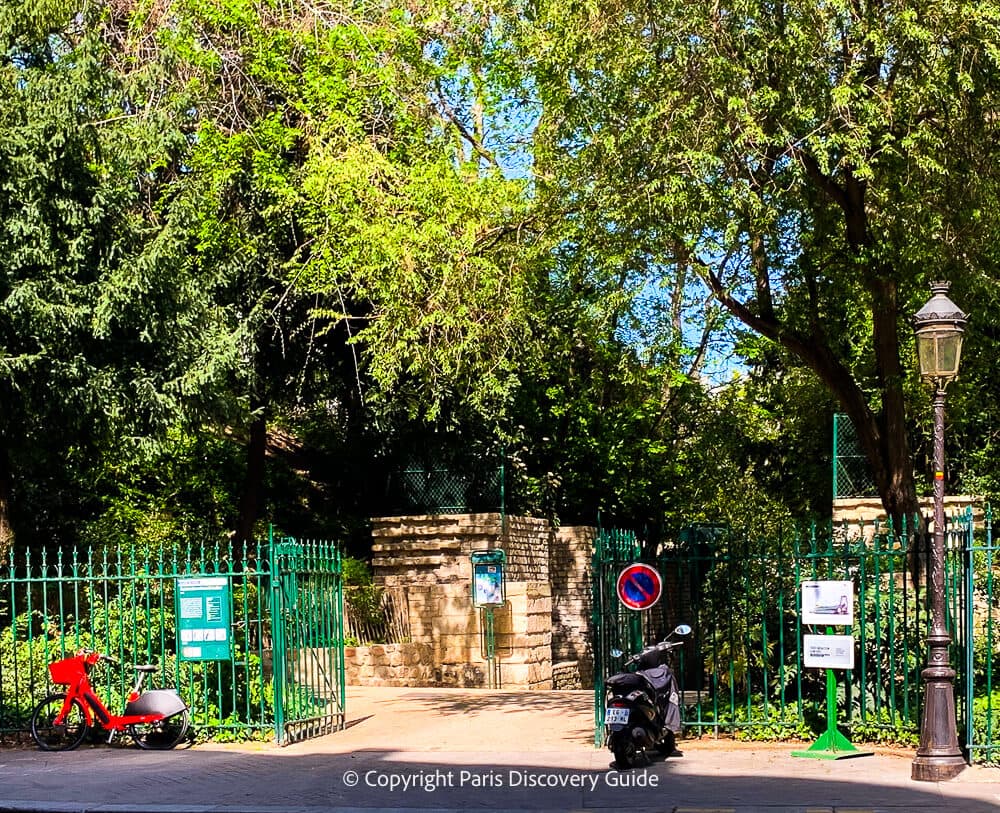
This entrance leads you straight down to the arena, offering a rather dramatic vista.
On Rue de Navarre, look for the open gate in the green wrought-iron fence along the street.
Go straight down a tree-shaded path to go directly into the arena, or follow one of the smaller winding paths to reach the top of the amphitheater in order to look down at the entire expanse.
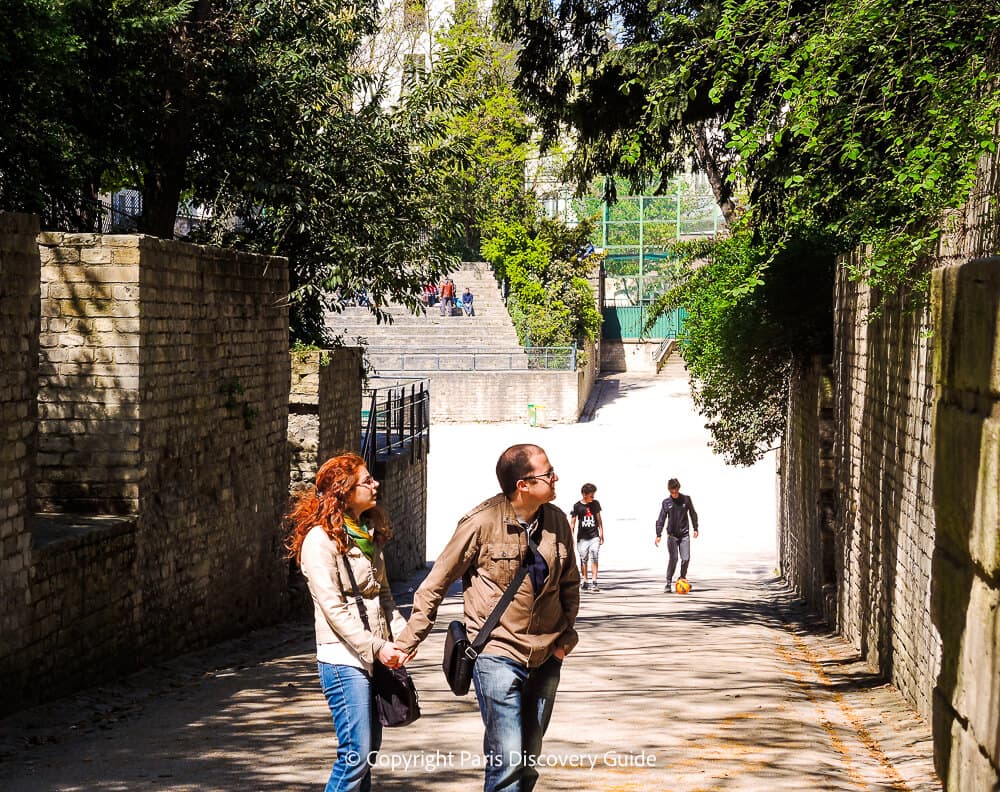
3. Rue Linné - Closest Métro: Jussieu
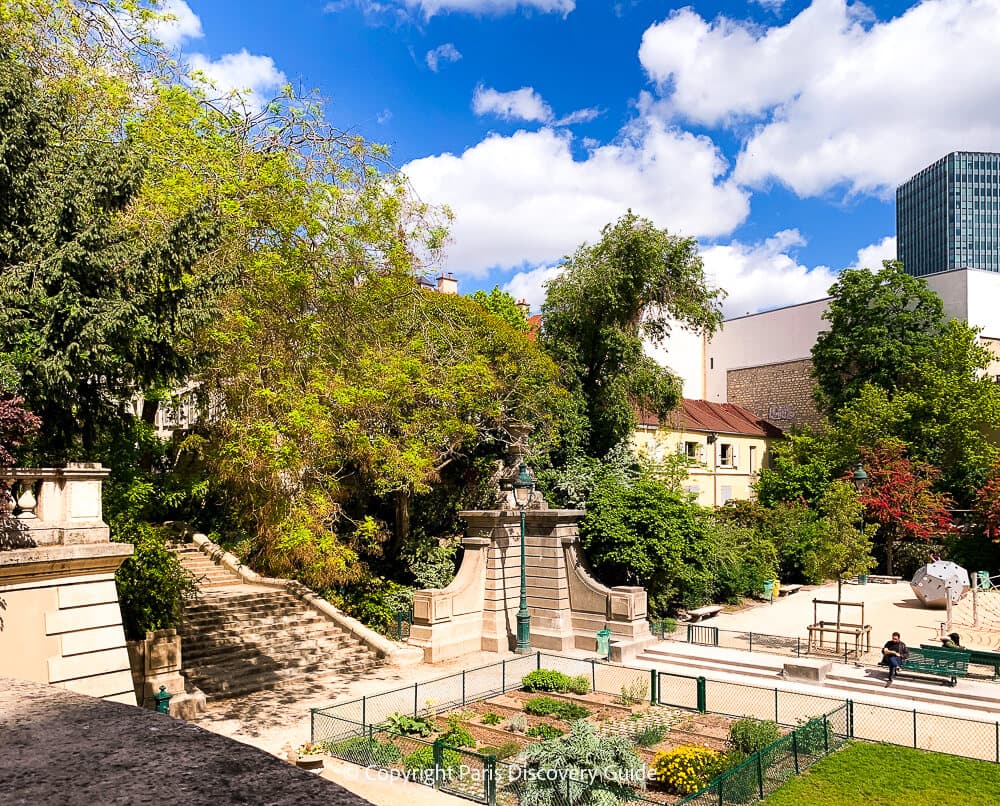
Turn off Rue Linné onto Rue des Arènes and almost immediately look on your left for a gate through the green fence leading to a children's playground and a discovery theme garden named L'illusion - this is Square Capitan.
The flights of stone steps that you'll see just beyond the garden lead you up to the grass lawn edging the amphitheater, where you can then look down on the arena.
Essentials: Arènes de Lutèce
- Location: 49 Rue Monge, Latin Quarter, 5th Arrondissement, Paris
- Open: 9am-7:30pm or 8:30pm, April-October; 8am-5:30pm, November - March
- Admission: Free
- Métro: Jussieu (L 7 & 10), Place Monge (L 7), Cardinal Lemoine (L 10)
- Bus: 47, 67, 89
More about Arènes de Lutèce's History
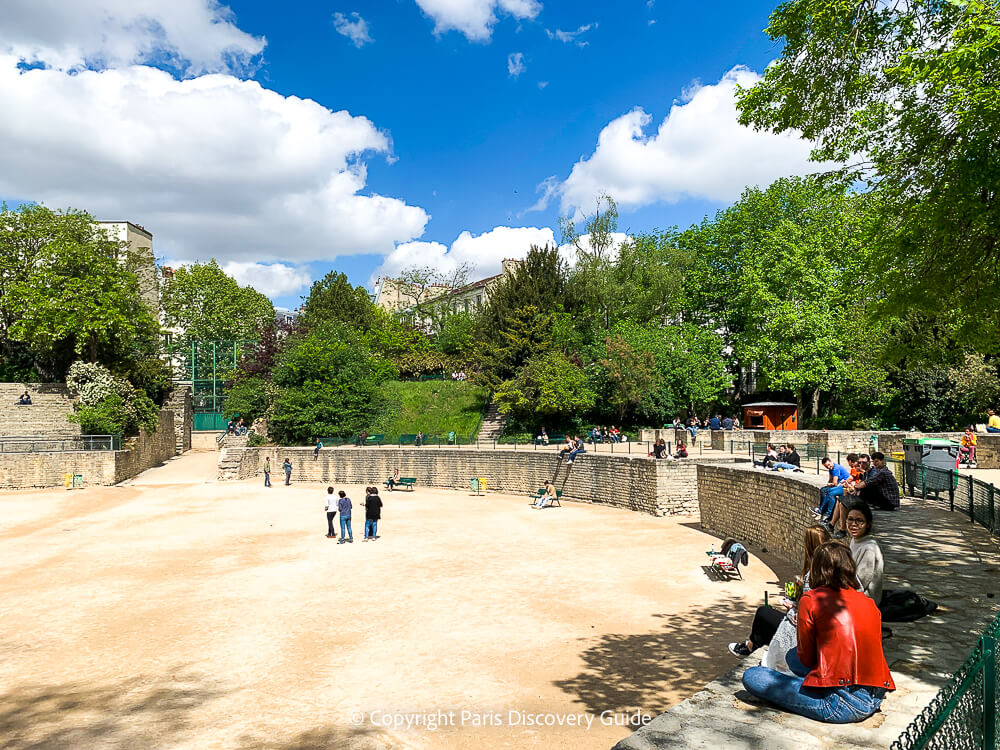
Surrounded by a small but lovely woodland park filled with flowering plants and trees, Arènes gives you a rare opportunity to see an actual Roman amphitheater outside of Italy and Southern France.
Measuring about 433ft x328 ft (132m x 100m), the arena boasts an unusual oblong shape. Historians believe it may be the largest of its kind built by the Romans.
Much of what you see is not actually original. The Gallo-Roman inhabitants of Lutetia carted off a number of larger stones to fortify Île de la Cité in the 3rd century after Germanic tribes (the "barbarians" mentioned on informational signs posted around the park) invaded.
During the 1200s, King Phillip II (Philip Augustus) ordered a wall to be built around the city to fortify it against possible English invaders while he fought in the Third Crusade, and during this time, the arena was filled in.
(A few remnants of Philip Augustus's medieval wall still remain - stroll over to 12 Rue Clovis to see the section closest to the arena.)
Although Parisians continued to call the neighborhood les Arènes, eventually no one remembered the arena’s location until archaeologist Theodore Lacquer discovered its northern end in 1869 during construction of Rue Monge as part of Baron Haussmann’s grand redevelopment scheme for the city,
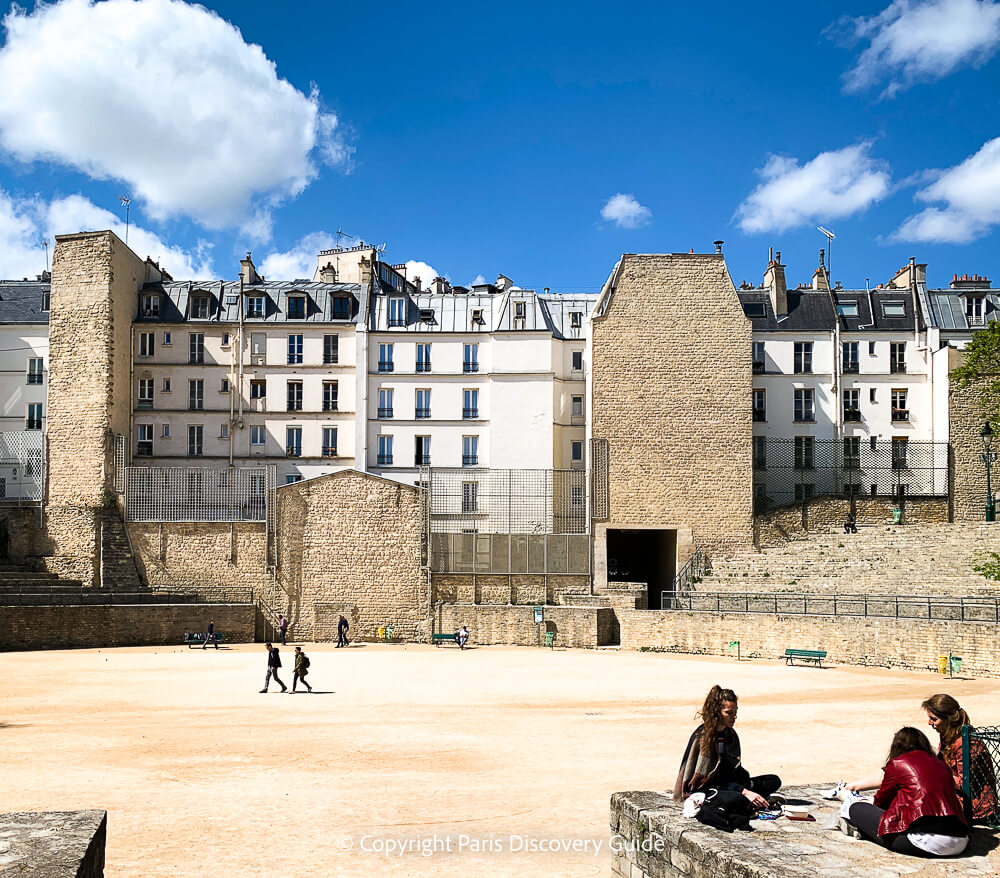
Over the next half-century, excavations revealed the area you can see today, although buildings along Rue Monge displaced one whole side of the Arènes and other parts were destroyed and then later restored as this part of the city modernized.
Visitor Tips for Enjoying the Arena
The best vantage points for viewing the arena are along the top of the amphitheater, which you can easily reach by any of the meandering paths, or by simply walking around the arena itself.
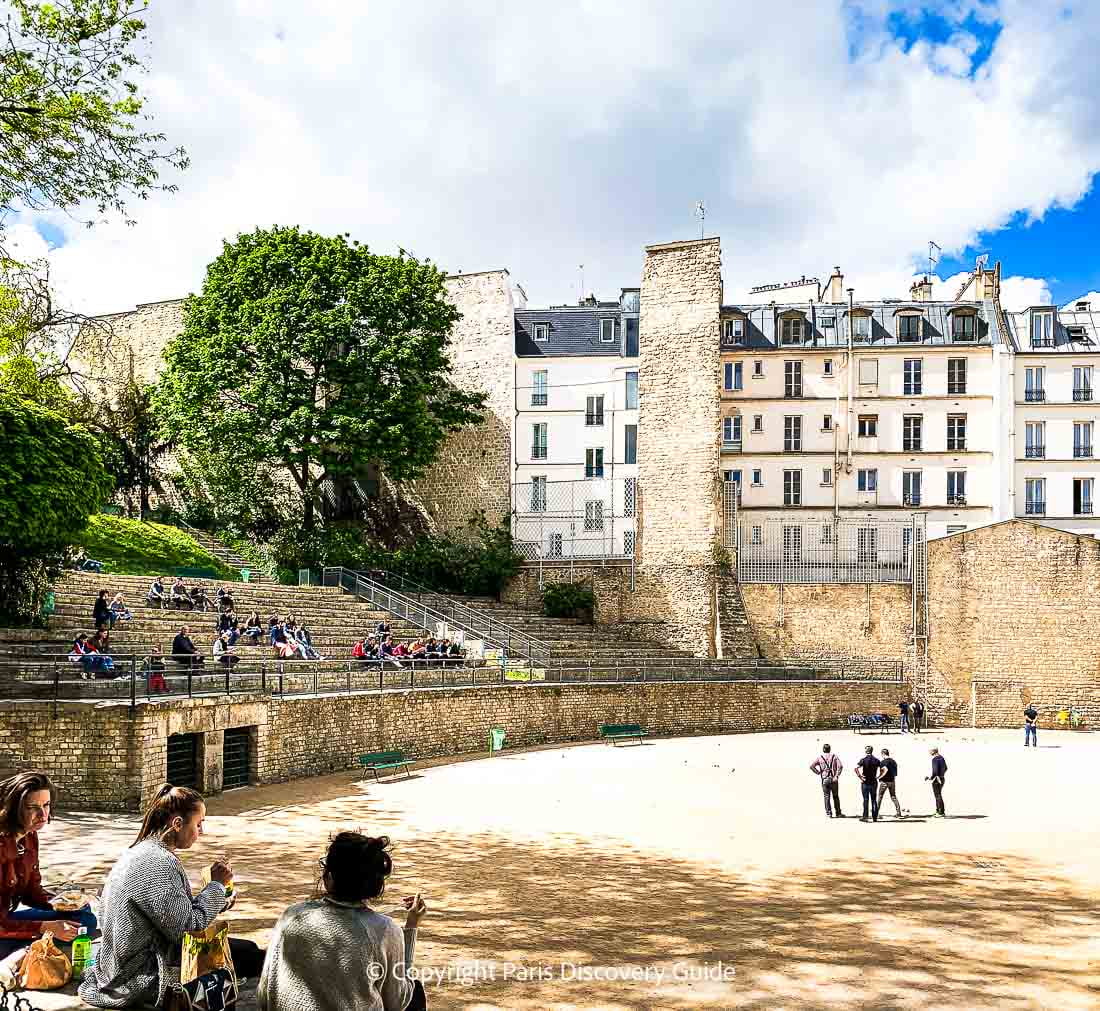
If you are visiting with teens, encourage them to join the soccer players or just go for a run around the arena.
Younger children? Stake out a spot on the grass for games and a picnic.
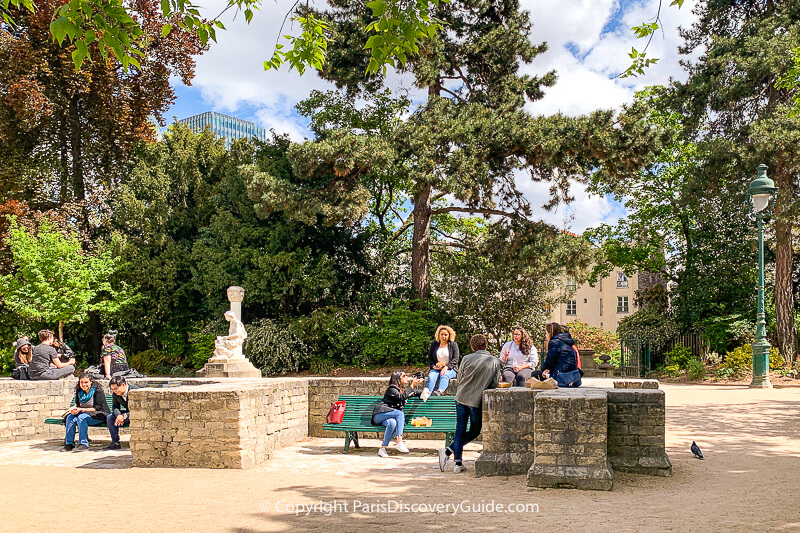
Or copy the Parisians - buy a sandwich and drink at a nearby boulangerie, and find a quiet spot to enjoy your lunch and a book.
Spend a moment trying to imagine the early Parisians who gathered here for recreation almost 2,000 years ago.
Carpe diem!
More Things to Do at the Arena
The Playground at Square Capitan
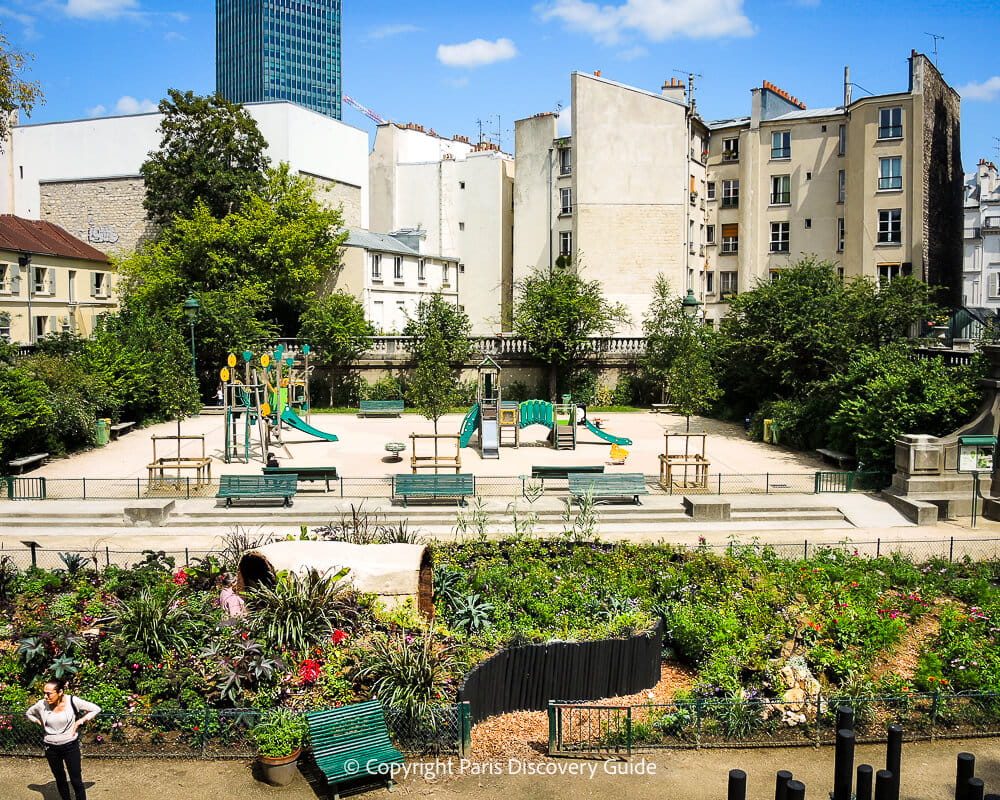
If your children are between about 3 and 12, head to the enclosed playground in Square Capitan located directly behind the Arènes where they can run around and try the slides while you sit on a bench.
This is a popular gathering spot for parents and kids after school and on weekends, so they'll quickly find a few playmates.
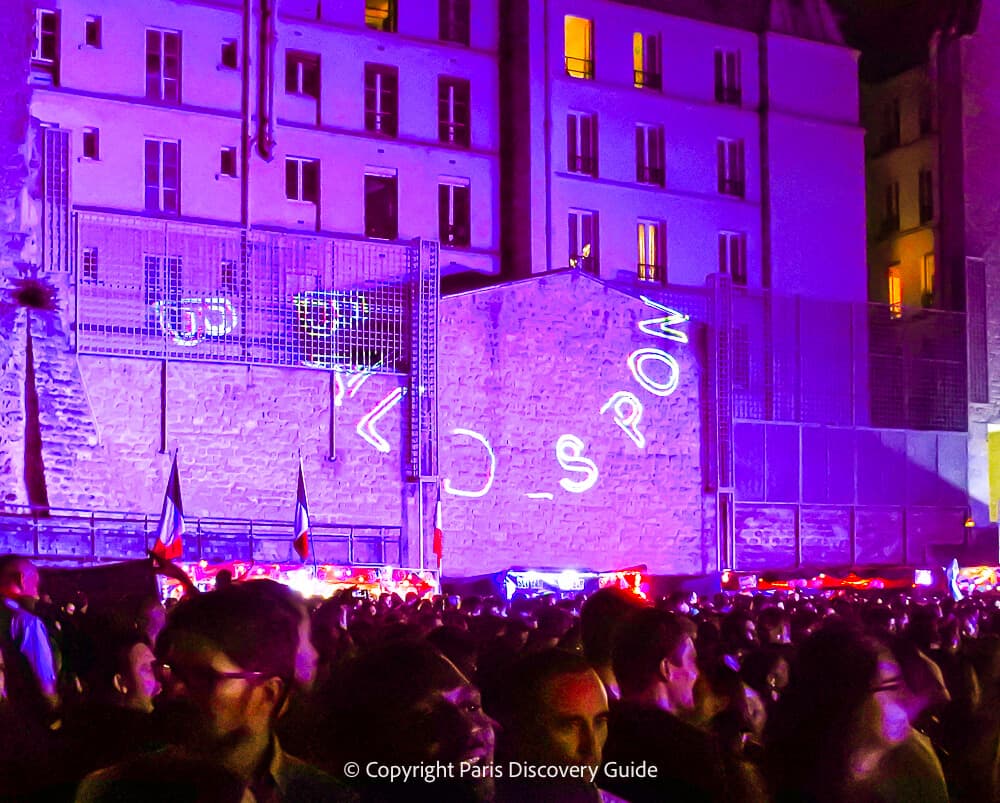
Celebrate Bastille Day at the Arena
If you're fortunate enough to be in Paris on Bastille Day, attend the popular Bal des Pompiers (Firemen's Ball) held at Arènes to celebrate the start of the French Revolution.
DJs, music, and dancing entertain crowds until approximately 5am. Champagne, wine, beer, and snacks available onsite keep the exuberant crowd energized.
During the years when Romans ruled Lutetia, as they initially called what is now Paris, the arena could probably hold around 15,000 people.
On the nights of the Firemen's Balls, it proves that it still can.
Paris Discovery Tip: More to See & Do near Arènes de Lutèce
- Jardin des Plantes: Visit the Paris Menagerie and Museum of Natural History. Explore the Botanical Garden and the maze. About 1 block away on Rue Linné.
- Arab World Institute: Admire the superb art and cultural displays (Paris Discovery Tip: it's always worth getting a ticket to their special exhibitions) in Joan Nouvel's striking building. Sip mint tea and nibble on Lebanese pastries on the 9th floor restaurant terrace overlooking Paris rooftops and especially the spectacular Notre Dame views (3pm-6pm). 1 Rue des Fossés Saint-Bernard.
- Place de la Contrescarpe: Channel the spirit of Ernest Hemingway and other 20th century writers in this picturesque Latin Quarter plaza. Hemingway and fellow American writer F. Scott Fitzgerald hung out here; George Orwell lived nearby on Rue de Pot du Fer when he wrote Down and Out in Paris and London. Intersection of Rue du Cardinal Lemoine, Rue Mouffetard, Rue Blainville, Rue Lacépède.
- Rue Mouffetard: Stroll down this wonderful market street - one of the best in Paris - and relax over lunch in Square Saint-Médard.
Hotels near Arènes de Lutèce - Where to Stay
Several attractive 3-star and 4-star Paris boutique hotels close to the Arena's Rue Monge entrance offer reasonable rates, personalized service, air conditioning, and excellent value in this lovely, quiet corner of the 5th arrondissement.
In addition to being close to the Arènes, their Latin Quarter location gives you easy access to Jardin des Plantes, the wonderful tearoom in Mosquée de Paris where you can savor mint tea and Tunisian pastries, and the Rue Mouffetard market street.
All occupy older buildings, and guest rooms tend to be small. The smallest rooms can be great bargains, especially if you're traveling solo, but for more space, book one of the larger options if your budget permits.
Hotel des Arènes
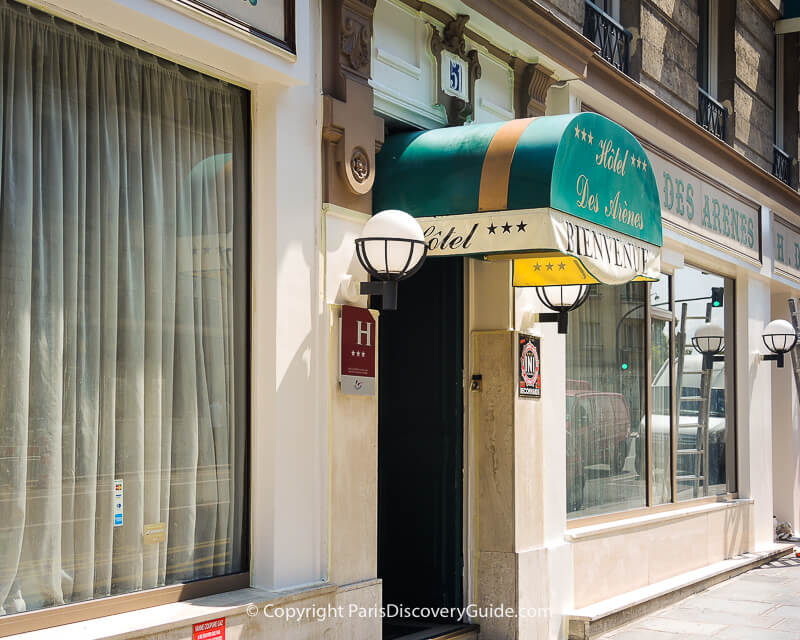
The 3-star Hôtel des Arènes (51 Rue Monge), located next to the arena entrance, has 52 comfortably furnished guestrooms.
For a special experience, reserve one of the rooms at the back overlooking the les Arènes de Lutèce - some even feature small balconies.
Hotel Monge
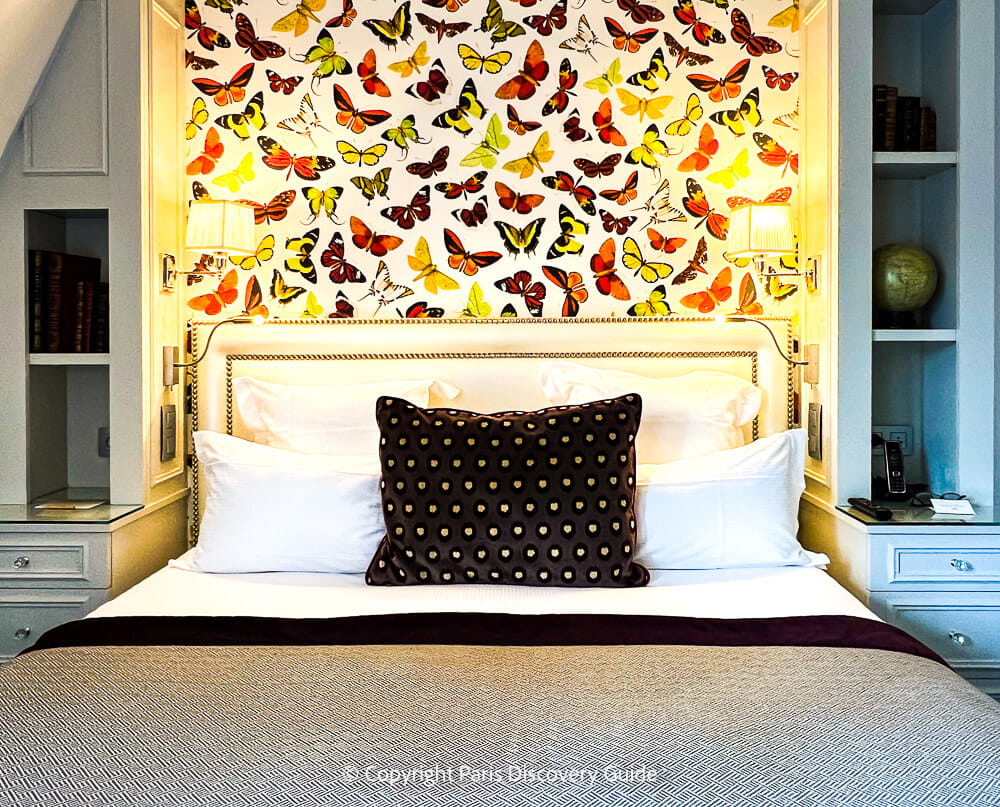
Hôtel Monge (55 Rue Monge), a popular 4-star choice offers 30 guestrooms featuring bright and lovely botanical motifs. You can book a massage for an extra fee at the onsite hammam.
A glass-sided elevator gives you cool views of the arena. The hotel also has an honesty bar and tea room.
Hotel des Nations Saint-Germain
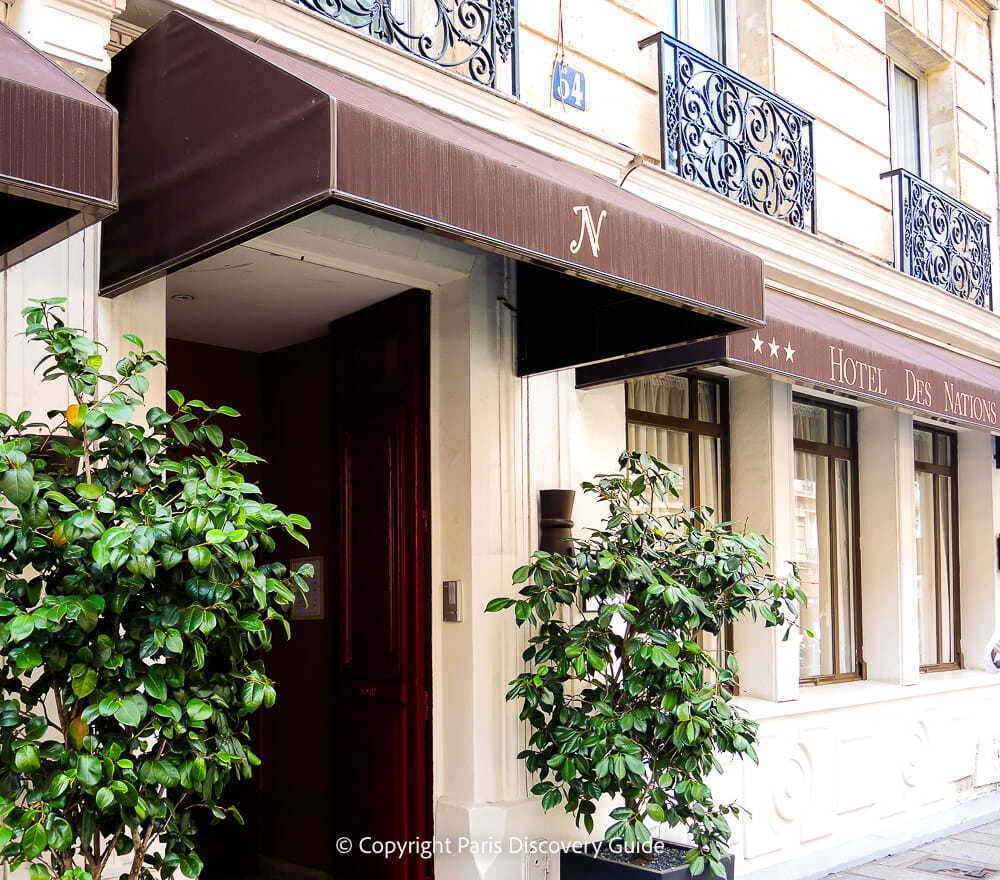
Hôtel des Nations Saint-Germain (54 Rue Monge), also a 3-start choice, offers 36 rooms including a few popular quadruples and triples, recently renovated in a chic, contemporary style.
An honesty bar is offered starting at 2pm. Although this hotel does not overlook the arena (it's on the opposite side of Rue Monge from Hotel des Arènes), it gives you excellent value in this appealing neighborhood - and you're only about a 30-second walk to the Roman arena across the street.
Paris Hotel & Apartment Map
Find more Paris hotels and apartments in the Latin Quarter:
Booking.comWhere to Eat near Arènes de Lutèce
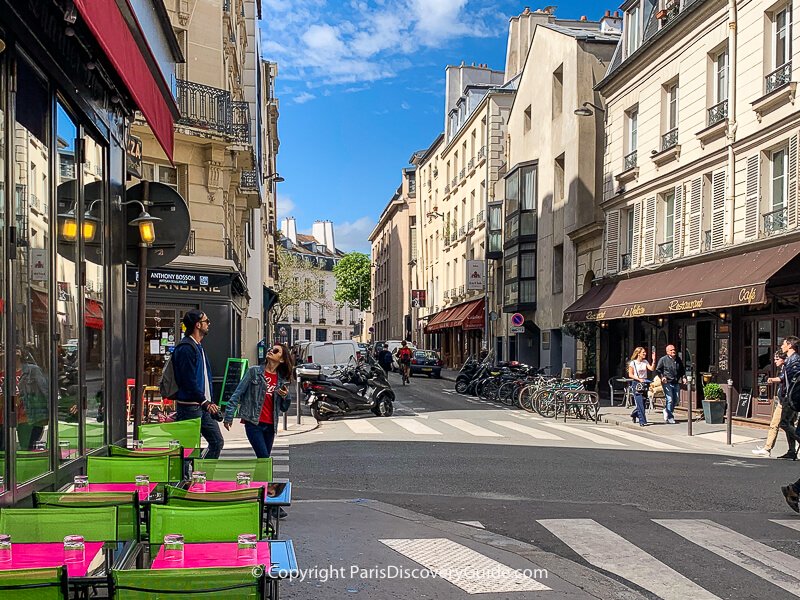
Rue Monge and other streets surrounding the arena are packed with appealing cafés, boulangeries, markets, and bistros attracting mainly Parisians. You can buy sandwiches, fruit, and wine for a picnic, or enjoy an inexpensive meal.
Just a couple of blocks farther, however, you'll find Place de la Contrescarpe made famous by Hemingway, James Joyce, George Orwell, and other 20th century writers. Here, you'll find plenty of tourists clustered around numerous cafes and bistros, as well as clothing boutiques and souvenir shops.
Walk down Rue Mouffetard for even more choices - because, as Hemingway would say about Paris in general, this corner of the Latin Quarter is truly a "movable feast."
Pin Now, Read Again Later
Fun Ways to Visit Other Top Paris Attractions
More Articles about Historical Paris
- Explore Ile de la Cité, the historical heart of Paris
- See spectacular medieval stained glass and hear classical concerts at Sainte-Chapelle
- Charming Nooks & Crannies Bike Tour - Explore special corners of the Latin Quarter, Marais, Saint Germain des Prés, and other fabled Paris neighborhoods


